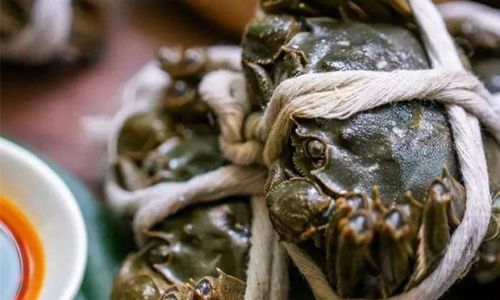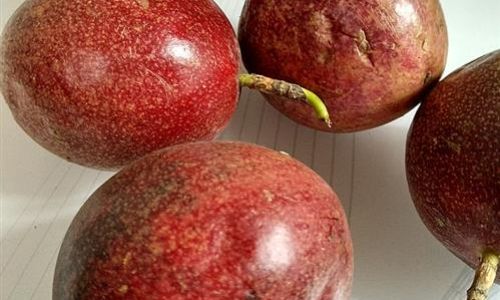Table of content
Introduction
Preserving tied crabs properly is essential to maintain their freshness, flavor, and safety for consumption. Whether you are a commercial fisherman, a seafood enthusiast, or a home cook, understanding the correct storage methods for tied crabs can prevent spoilage, bacterial growth, and texture degradation. This article delves into the science behind crab preservation, step-by-step techniques for refrigeration, freezing, and live storage, and common pitfalls to avoid. By mastering these methods, you can ensure your crabs remain delicious and safe to eat for days or even months.

Understanding Crab Biology and Storage Challenges
Crabs are ectothermic (cold-blooded) crustaceans whose metabolic rates slow down at lower temperatures. This biological trait works in your favor when storing them, as cooler environments can extend their lifespan. However, crabs are also highly sensitive to environmental changes, including temperature fluctuations, oxygen levels, and humidity. When tied, their mobility is restricted, which reduces stress but also limits their ability to regulate their own conditions.
Tied crabs are often secured with rubber bands, twine, or nets around their claws to prevent injury and aggression. While this makes handling safer, it can also lead to trapped moisture or restricted gill function if not stored correctly. Decomposition begins rapidly after death due to enzymatic activity and microbial growth, making time-sensitive storage critical.
Preparing Tied Crabs for Storage
Before storing, proper preparation ensures longer shelf life:

- Cleaning: Rinse crabs under cold, running water to remove mud, debris, and bacteria. Avoid using soap or detergents, as these can contaminate the meat.
- Inspection: Discard any crabs with broken shells, foul odors, or lethargic movements (if storing live). Dead crabs should never be stored alongside live ones, as they release toxins that accelerate spoilage.
- Drying: Pat crabs gently with a clean cloth to remove excess surface moisture. Excess water can promote bacterial growth in storage containers.
Refrigeration: Short-Term Storage for Live Crabs
Refrigeration is ideal for preserving live crabs for 1–2 days. Follow these steps:
- Temperature Control: Set your refrigerator to 34–38°F (1–3°C). Avoid freezing temperatures, as this will kill the crabs.
- Container Setup: Place crabs in a shallow, ventilated container lined with damp paper towels or seaweed. Do not submerge them in water, as this can drown them.
- Humidity Management: Lightly mist the towels or seaweed with saltwater (1–2 tablespoons of sea salt per liter of water) to maintain humidity without soaking the crabs.
- Positioning: Store crabs upside-down (shell-side down) to reduce stress on their gills.
- Monitoring: Check daily for signs of distress, such as erratic movement or discolored gills. Remove dead crabs immediately.
Pro Tip: Cover the container with a damp cloth to retain moisture but avoid airtight lids, which can suffocate the crabs.
Freezing: Long-Term Storage for Cooked or Raw Crabs
Freezing is the best method for preserving crabs beyond 48 hours. However, improper freezing can ruin texture and flavor.

A. Freezing Raw Crabs
- Blanching:
- Boil crabs for 2–3 minutes (whole) or 1 minute (if pre-cleaned and split).
- Immediately transfer to an ice bath to halt cooking. This step preserves texture and kills surface bacteria.
- Packaging:
- Remove excess water and place crabs in airtight freezer bags or vacuum-sealed pouches.
- Add a brine solution (1 cup salt per gallon of water) to prevent freezer burn.
- Labeling: Date and label bags. Frozen raw crabs last 3–6 months.
B. Freezing Cooked Crabs
- Cook Thoroughly: Steam or boil crabs until shells turn bright red (15–20 minutes).
- Cooling: Let crabs cool at room temperature for 30 minutes, then refrigerate for 1–2 hours.
- Packaging:
- Separate meat from shells if desired.
- Use freezer-safe containers or bags, removing as much air as possible.
- Storage: Cooked crabs last 8–12 months in the freezer.
Thawing Guidelines:
- Refrigerator: Thaw slowly overnight (8–12 hours).
- Cold Water: Submerge sealed bags in cold water for 2–3 hours, changing water every 30 minutes.
- Avoid Microwaves: Rapid thawing damages texture.
Live Well Storage: For Anglers and Fishermen
If you catch crabs yourself, a live well—a portable tank with aerated water—is ideal for short-term storage (up to 24 hours).
- Water Quality: Use seawater or artificially salted freshwater (30–35 ppt salinity).
- Aeration: Ensure constant oxygen flow with a pump or bubbler.
- Temperature: Maintain water between 50–60°F (10–15°C).
- Feeding: Offer small amounts of fish or clams if storing for over 12 hours.
- Density: Store no more than 5 crabs per gallon of water to prevent stress.
Warning: Never mix species or sizes in the same live well, as larger crabs may cannibalize smaller ones.

Maintaining Quality: Key Factors to Monitor
- Odor: Fresh crabs smell briny and ocean-like. A sour or ammonia-like odor indicates spoilage.
- Shell Color: Vibrant, consistent coloring denotes freshness. Dull or discolored shells signal decay.
- Gill Health: Healthy gills are cream-colored; gray or brown gills mean the crab is dying or dead.
- Movement: Live crabs should respond to touch by moving their legs or claws.
Common Mistakes to Avoid
- Storing Live Crabs in Freshwater: Crabs need saltwater to breathe.
- Overcrowding Containers: Restricts oxygen flow and increases aggression.
- Using Airtight Containers: Traps carbon dioxide and suffocates crabs.
- Freezing Without Blanching: Results in mushy texture.
- Thawing at Room Temperature: Promotes bacterial growth.
Creative Ways to Use Stored Crabs
- Steaming: The classic method to retain natural flavors.
- Soups and Stews: Add frozen crab meat to chowders or bisques.
- Crab Cakes: Mix with breadcrumbs, mayonnaise, and spices.
- Sushi Rolls: Use cooked crab meat in California rolls.
- Dips and Spreads: Blend with cream cheese for a party appetizer.
Safety and Health Considerations
- Cook Thoroughly: Internal temperature should reach 145°F (63°C) to kill parasites.
- Avoid Cross-Contamination: Use separate utensils and cutting boards for raw and cooked crabs.
- Vulnerable Populations: Pregnant women, young children, and immunocompromised individuals should avoid raw or undercooked crab due to Vibrio bacteria risks.
Eco-Friendly Disposal of Crab Waste
- Shells: Boil and grind for garden fertilizer (high in calcium).
- Water: Dispose of refrigerator drip pan water away from storm drains to avoid saltwater contamination.
- Packaging: Recycle plastic containers or use biodegradable bags.
Conclusion
Properly storing tied crabs requires attention to detail, from initial preparation to choosing the right preservation method. Refrigeration suits short-term needs, freezing extends shelf life, and live wells cater to anglers. By avoiding common mistakes and prioritizing hygiene, you can enjoy crab meat at its peak freshness. Whether you’re planning a feast or stocking up for future meals, these techniques ensure your crabs remain a culinary delight. Remember: Freshness starts with care, and endurance lies in science. Happy storing!






0 comments